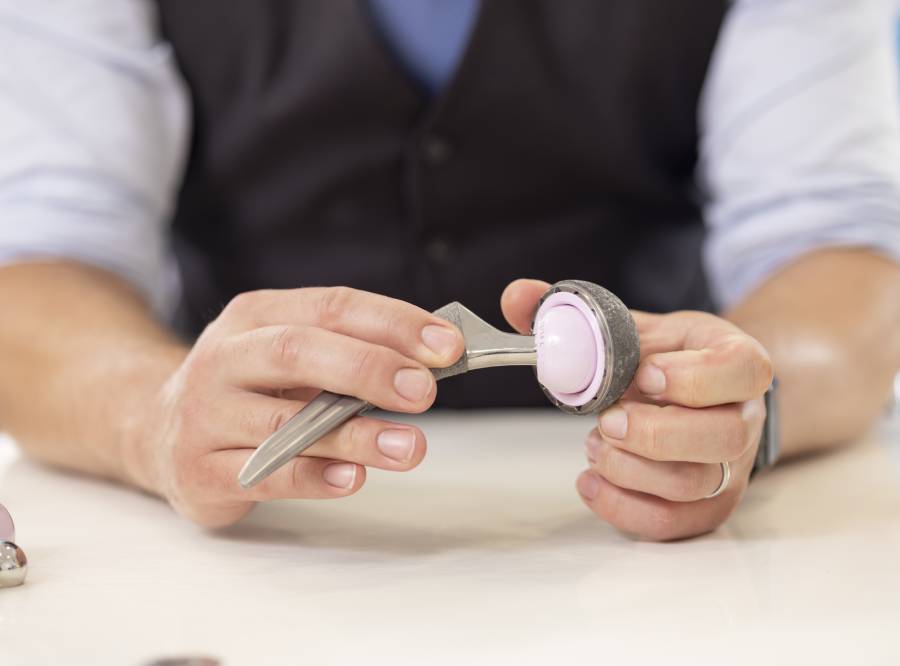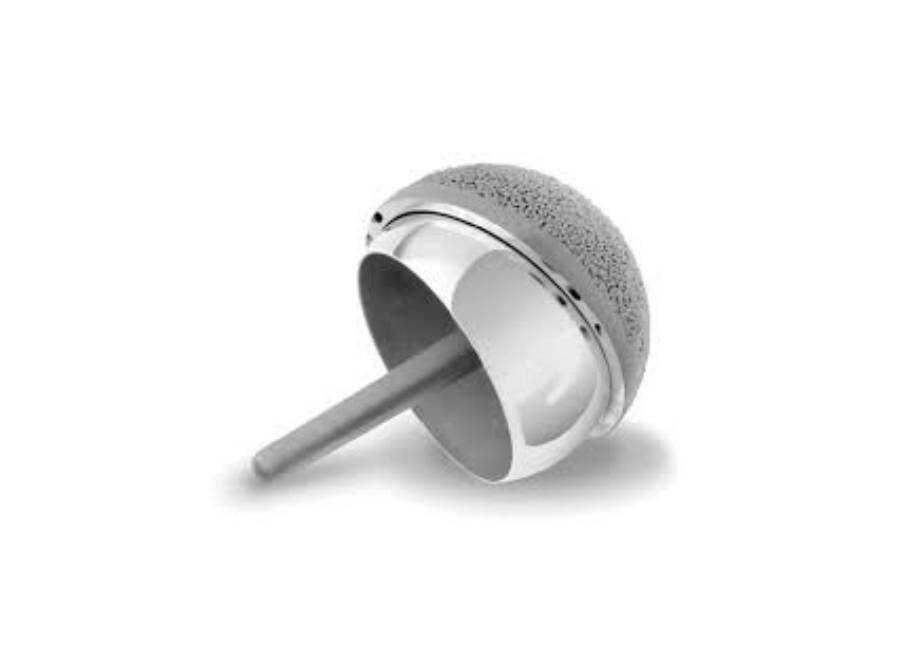Hip conditions
Problems start in the hip when the cartilage covering both surfaces is damaged or wears out. When this happens, patients usually experience pain and stiffness and a reduced ability to walk before having to stop. Pain is felt deep in the hip and often in the buttock or thigh. However, for some patients, stiffness and reduced mobility can be more of an issue than pain. The majority of people attending an orthopaedic department with a hip concern suffer from unavoidable age-related 'wear and tear' known as osteoarthritis. In very rare cases this can be due to excessive use rather than just a factor of age. In some patients, pain is experienced in the hip which may be referred from other areas such as the back.
Though much less common, there are other conditions that can result in problems in the hip:
- Autoimmune conditions, such as rheumatoid arthritis, where the body reacts against its own cartilage. Patients with rheumatoid and other autoimmune arthritises are usually aware of their condition before it affects the hip joint.
- Previous damage to the cartilage from trauma or an accident.
- Developmental problems in the hip, usually DDH (developmental dysplasia of the hip) , Perthes disease. And slipped upper femoral epiphysis In these disorders the joint is more likely to fail earlier fails to develop properly.
Treatment for hip problems
All treatments for hip problems aim to provide pain relief and an increased range of movement and mobility, with the object of assisting a better quality of life.


Non-surgical treatment
Non-surgical measures are always considered as the first line of approach for hip problems. Options include drug therapy, physiotherapy and walking aids to help with mobility. Further options are available for patients whose hip discomfort is due to referred pain from other areas such as the back.


Surgery
Surgery for hip problems is generally considered when non-surgical options are not providing enough relief from pain and disability and a patient's daily activities are being seriously affected. If the pain and disability justify surgery, there is no age limit. Surgery is now considered as an option at a much earlier stage than in the past due to advances in materials and surgical techniques that are likely to provide longer lasting benefits. There are different types of hip surgery, with a wide range of prostheses (artificial joints or parts of joints) available.
Materials used in hip replacement
The UK has a long history pioneering cemented hip replacement and, in some cases, this can still be a good treatment particularly on the femoral side.
Cemented stems are optimally made of either stainless steel or a Chrome cobalt alloy. Cemented sockets are made of polyethylene and have no metal backing.
Uncemented hip replacement relies on metal becoming attached to the bone itself and Titanium alloys which are roughened with plasma spraying and or coated with hydroxyapatite are used. Uncemented hip replacement is now considered the most durable fixation worldwide. The bearing surfaces are made using either ceramic heads coupled with either highly crosslinked polyethylene, or ceramic liners. Sometimes chrome cobalt heads are used but we only use these in conjunction with polyethylene cups.
One of the biggest improvements in hip replacement has been replacing Ultra High Molecular weight polyethylene with Highly crosslinked Polyethylene. Fortunately, we at the LHU made this change 20 years ago when highly cross linked polyethylene first became available and we have seen no wear or damage to bone as a result of wear particles during that time.


Materials used in hip resurfacing
Most initial attempts at hip resurfacing in the 1970s was done using chrome cobalt heads and the socket was relined with a polyethylene cup. Because of excessive wear of the sockets, this technique was abandoned and McMinn developed hip resurfacing with a chrome cobalt head on a chrome cobalt cup.
This remains the gold standard for hip resurfacing. It can however cause problems if excessive wear occurs and the concentration of cobalt and chromium ions in the surrounding tissues become damaging. For this reason, resurfacing needs to be kept under review. There are now investigational trials on both chrome cobalt on highly crosslinked polyethylene and ceramic on ceramic hip resurfacing in progress.


Surgical approaches to hip replacement
Over the years there has been continued debate in the research world as to the best surgical approach for hip replacement.
Most surgery is done through the posterior approach, but we also offer the direct anterior approach in suitable patients.


Multidisciplinary team approach
Whilst in the past single practitioners would make all the decisions, more recently it has become normal for more complex cases to be discussed with a team approach.
As a group practice of orthopaedic surgeons, at The London Hip Unit we have frequent meetings to discuss the correct treatment plan for individual patients and have links with chosen radiologists, rheumatologists, specialist nurses and physiotherapists to best plan out the preferred treatment options.


Surgical research in progress at The London Hip Unit
- Participation in global study on ceramic hip resurfacing
- Study on function of hip capsule with biomechanical engineering group at Imperial College
- Studies on optimising impaction forces of components in THR with Imperial College
Get in touch
We are available to take your call during office hours, 9am - 5pm, Monday to Friday.
E: londonhip@hcahealthcare.co.uk
T: +44 (0)20 7908 3709